The 4-3 defense playbook is a versatile strategy emphasizing four defensive linemen and three linebackers. It balances run defense and pass coverage, offering flexibility against various offensive formations while teaching fundamental techniques to develop players effectively.
Base Formation and Philosophy
The 4-3 defense playbook is built around a base formation featuring four defensive linemen and three linebackers. This alignment is designed to provide a balanced approach to stopping both the run and the pass. The defensive line typically consists of two defensive tackles and two defensive ends, positioned to occupy blockers and create gaps for the linebackers to fill. The middle linebacker often serves as the defensive leader, responsible for calling plays and directing the unit.
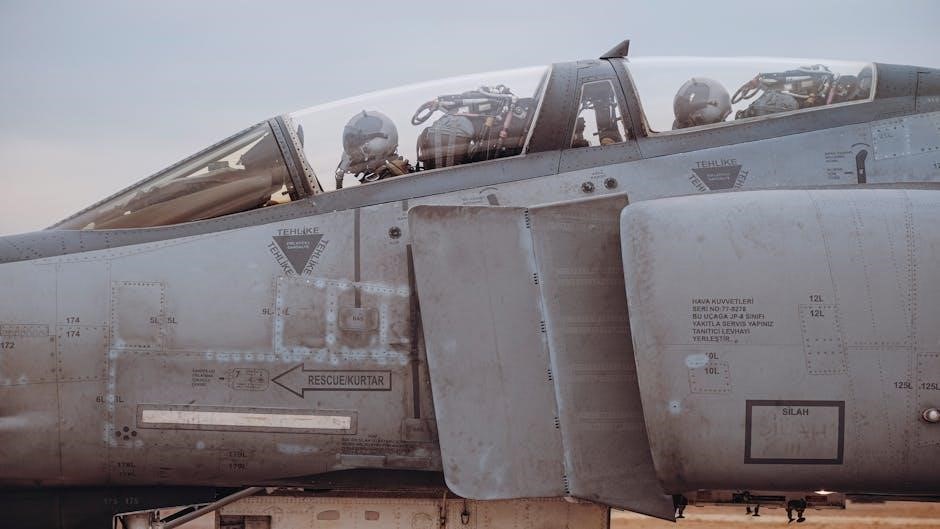
The philosophy of the 4-3 defense emphasizes versatility and adaptability. It relies on the defensive line to control the line of scrimmage, freeing the linebackers to pursue the ball carrier or drop into coverage. This scheme is particularly effective against running plays, as it focuses on stopping the run first while maintaining the ability to pressure the quarterback. The secondary, though not directly part of the base formation, plays a crucial role in supporting the defense through pass coverage and run support.
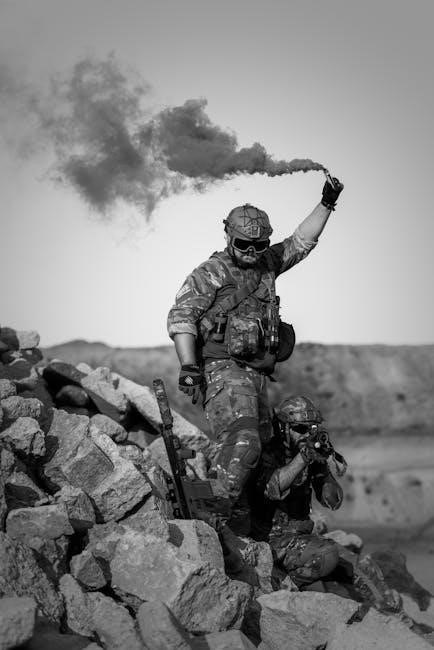
The 4-3 defense is also known for its simplicity, making it easier for younger players to learn and execute. Coaches often use this scheme to teach fundamental defensive techniques, such as gap responsibility and tackling. Its flexibility allows for adjustments to counter various offensive formations, ensuring the defense remains competitive in diverse situations.
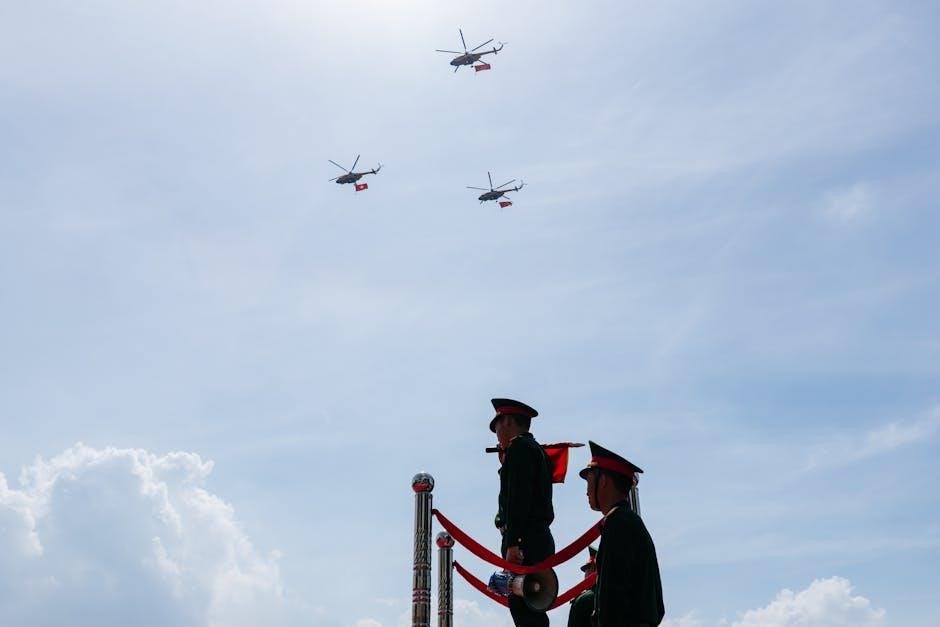
Key Positions in the 4-3 Defense
The 4-3 defense relies on four defensive linemen and three linebackers. The defensive tackles and ends are crucial for stopping the run and pressuring the quarterback, while the middle and outside linebackers provide versatility in run support and pass coverage.
Defensive Line Roles and Responsibilities
The defensive line in the 4-3 scheme consists of two defensive tackles and two defensive ends. Their primary roles are to occupy blockers and stop the run; The tackles, often larger and stronger, plug the interior gaps, while the ends are typically quicker and focus on pressuring the quarterback. They must also maintain containment to prevent the quarterback from escaping the pocket. Effective defensive line play is essential to the success of the 4-3 defense, as it allows the linebackers to flow freely to the ball. Each lineman has specific gap responsibilities, ensuring that all rushing lanes are covered. Additionally, they must be disciplined in their techniques to avoid overcommitting and leaving vulnerabilities in the defense. The defensive line’s ability to control the line of scrimmage dictates the overall effectiveness of the entire defensive unit.

Linebacker Assignments and Coverage
In the 4-3 defense, linebackers are the heartbeat of the unit, responsible for stopping the run, covering receivers, and blitzing when called upon. The middle linebacker (MIKE) is the defensive leader, calling plays and aligning the defense. They are responsible for filling gaps in the run game and dropping into intermediate coverage zones in passing situations.
The outside linebackers (SAM and WILL) have distinct roles. The SAM linebacker often aligns over the tight end and is involved in run support and coverage of tight ends and running backs. The WILL linebacker, positioned on the weak side, has more freedom to flow to the ball and cover receivers in the flat or hook zones.
Linebackers must excel in both physical and mental aspects of the game. They need to read offensive keys, such as the guard’s block, to diagnose plays quickly. In pass coverage, they are expected to mirror receivers’ routes and maintain proper depth. Their ability to blitz effectively adds pressure on the quarterback, disrupting offensive timing.
Key responsibilities include:
- Filling gaps in the run game
- Covering underneath zones in pass defense
- Executing blitz packages to pressure the quarterback
- Communicating adjustments to the defense
Linebackers must also be disciplined in their assignments to avoid overcommitting, which could leave the defense vulnerable to big plays. Their versatility and execution are critical to the success of the 4-3 defense.

Secondary Alignment and Techniques
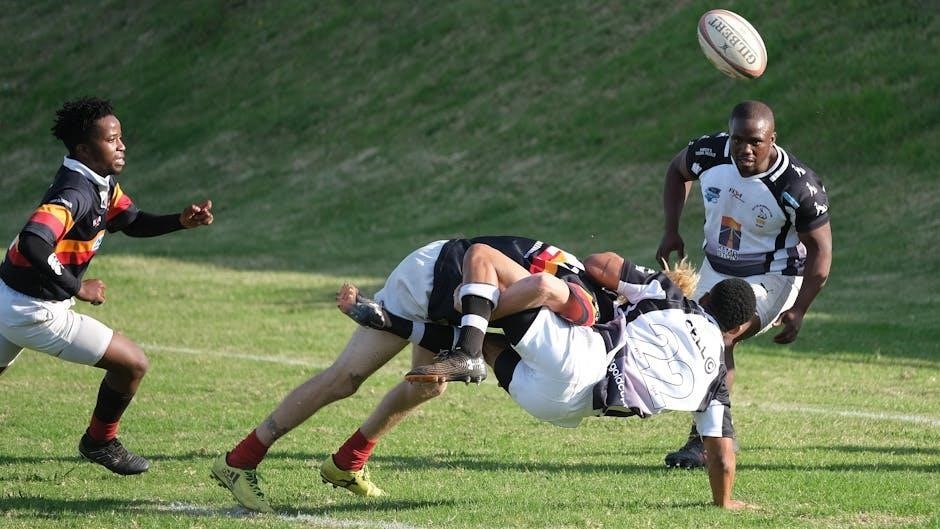
In the 4-3 defense, the secondary consists of two cornerbacks and two safeties, with their primary goal being to disrupt passing plays and provide deep coverage. Cornerbacks typically align in press or off coverage, depending on the defensive call. Press coverage involves jamming receivers at the line of scrimmage to disrupt their routes, while off coverage allows cornerbacks to read the play and react accordingly.
Safeties are often the last line of defense, responsible for covering deep zones such as the post or fly routes. They may also rotate to provide support in areas where cornerbacks are blitzing or out of position. Techniques such as backpedaling, jamming, and mirroring are essential for cornerbacks to stay with receivers and contest passes.
In zone coverage, safeties and cornerbacks divide the field into zones, with each player responsible for a specific area. This requires excellent communication and discipline to avoid gaps in coverage. Man-to-man coverage assigns each defensive back to a specific receiver, relying on their ability to stay in phase and make plays on the ball.
The safeties also play a crucial role in run support, filling gaps when the defensive line and linebackers are overwhelmed. Their dual responsibility of pass coverage and run support makes them pivotal in the 4-3 defense. Proper alignment and execution of techniques are vital to prevent big plays and maintain defensive integrity;
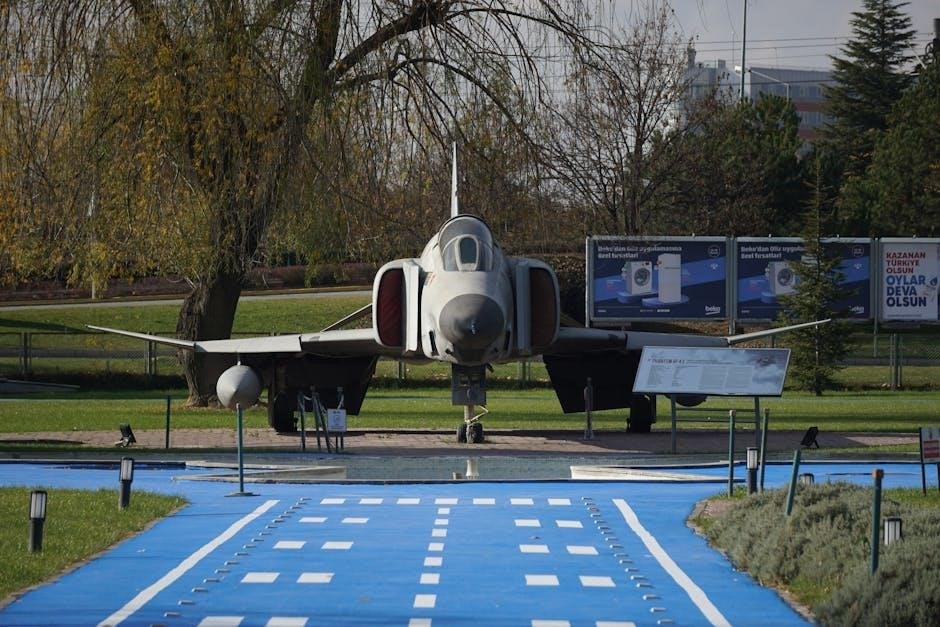
Strengths and Weaknesses of the 4-3 Defense
The 4-3 defense excels against the run with a strong front line and versatile linebackers. It offers flexibility in blitz packages and coverage schemes. However, it can struggle against teams with strong passing games and spread formations that exploit its limited defensive backfield depth.
Advantages Against Specific Offensive Formations
The 4-3 defense is highly effective against power running offenses, as its four defensive linemen and three linebackers provide a strong presence at the line of scrimmage. This alignment allows for consistent gap control and limits the opponent’s ability to establish a dominant rushing attack. Additionally, the 4-3 scheme thrives against heavy formations like the I-Formation and Pro Set, where the defense can load the box with personnel to stop the run. The defense also excels against play-action passes, as the linebackers are well-positioned to read and react to these deceptive plays. Furthermore, the 4-3’s ability to bring pressure from various angles makes it challenging for offenses to execute screen passes effectively. Overall, the 4-3 defense is well-suited to counter offenses that rely on physicality and traditional running schemes, making it a reliable choice for teams looking to establish a strong defensive identity.
Strategies to Address Common Weaknesses

To counter the 4-3 defense’s vulnerability to spread offenses and quick passing games, teams often employ nickel packages, substituting a defensive lineman for an extra defensive back. This adjustment enhances pass coverage while maintaining sufficient pressure up front. Additionally, defensive coordinators may utilize zone blitz concepts to create confusion for the quarterback, as linebackers and defensive backs interchange roles in coverage and pass rush.
Another strategy involves leveraging the versatility of the defensive line. By incorporating hybrid defensive ends who can both rush the quarterback and drop into coverage, the 4-3 defense becomes more adaptable. Furthermore, emphasizing proper alignment and gap discipline ensures that the defense can effectively contain outside runs and screens, which are often exploited by opposing offenses. Coaches also focus on improving linebacker coverage skills, enabling them to better match up with tight ends and running backs in passing situations. By combining these tactics, the 4-3 defense can mitigate its weaknesses and remain a formidable scheme in modern football.